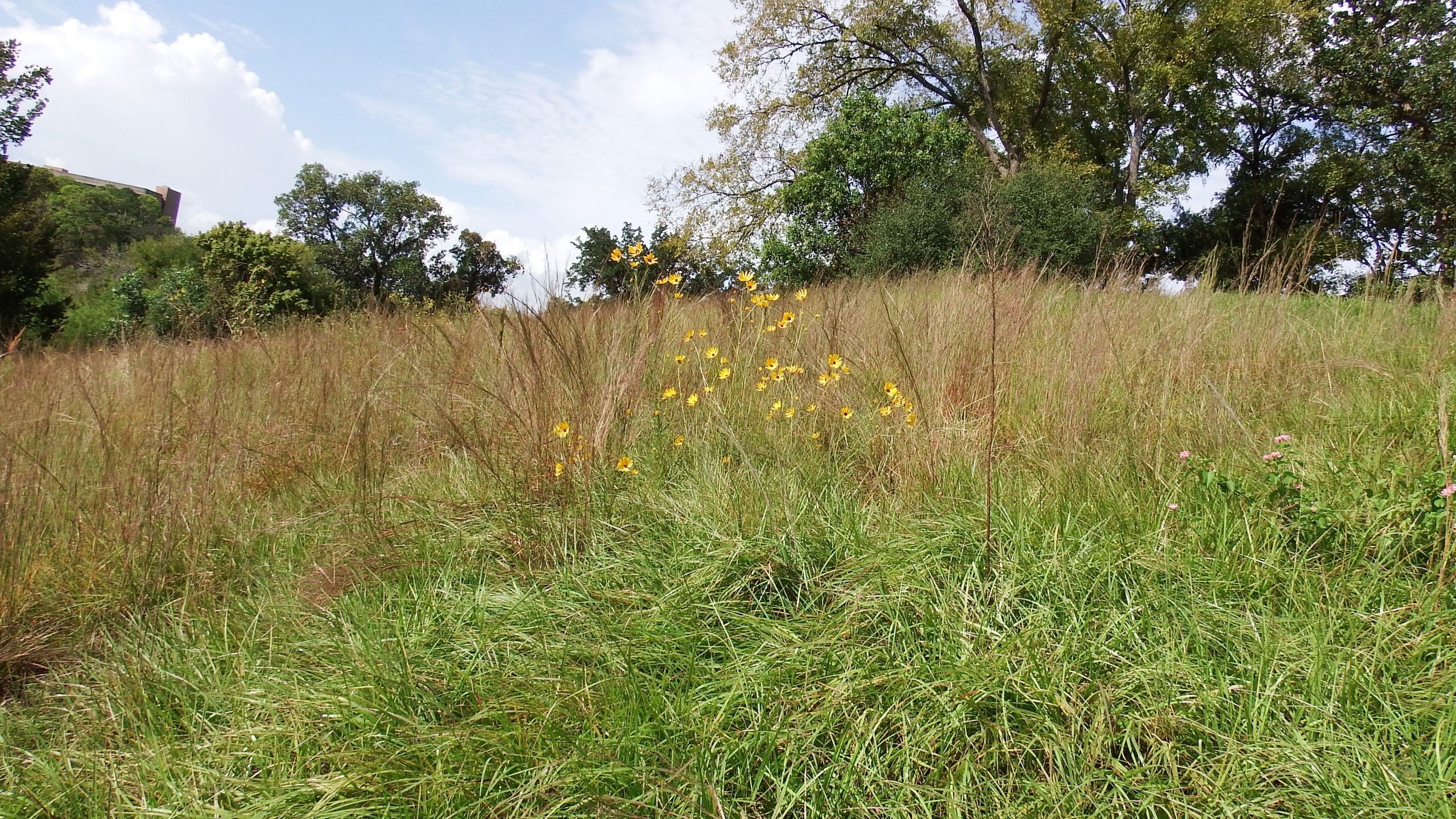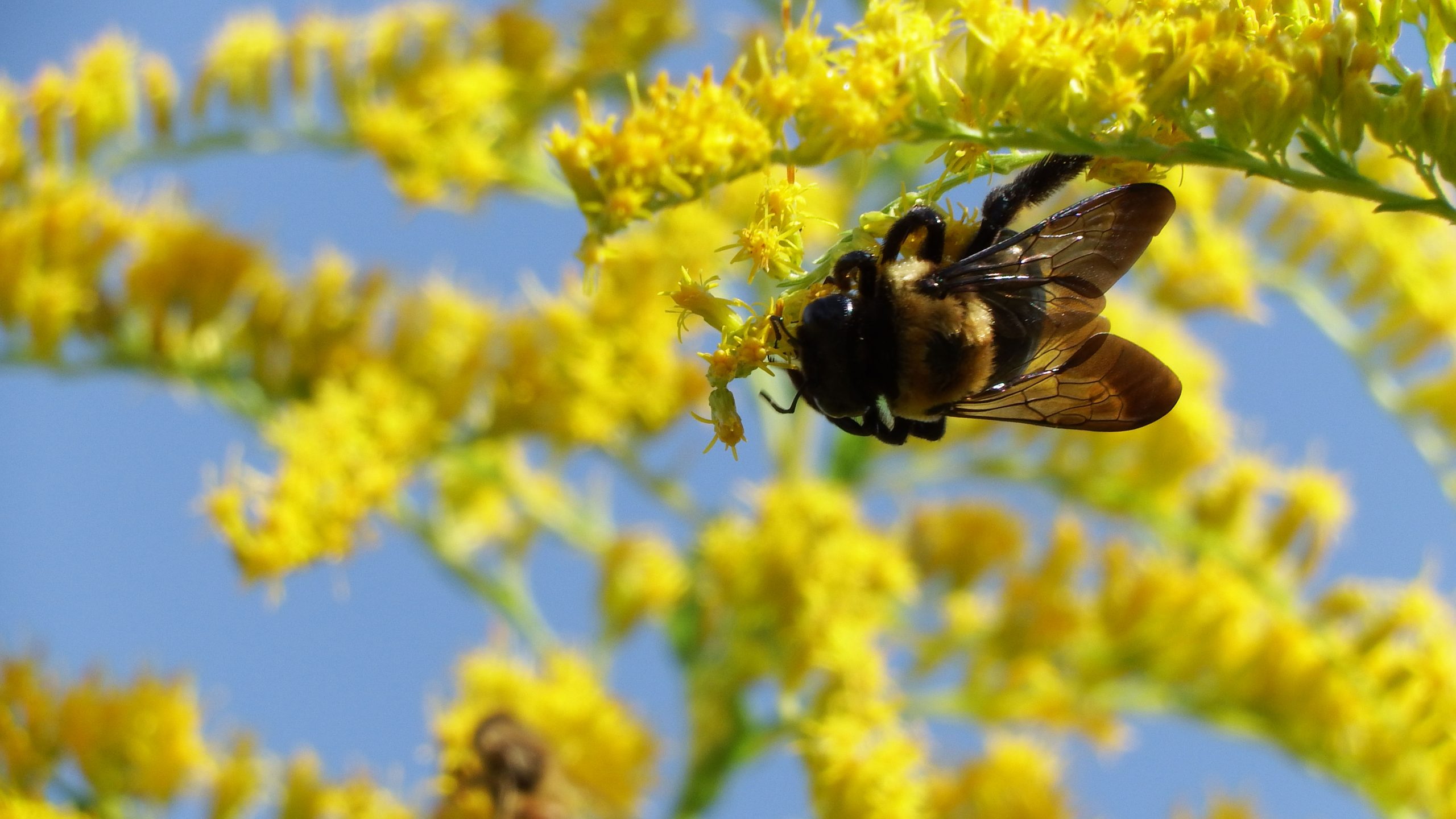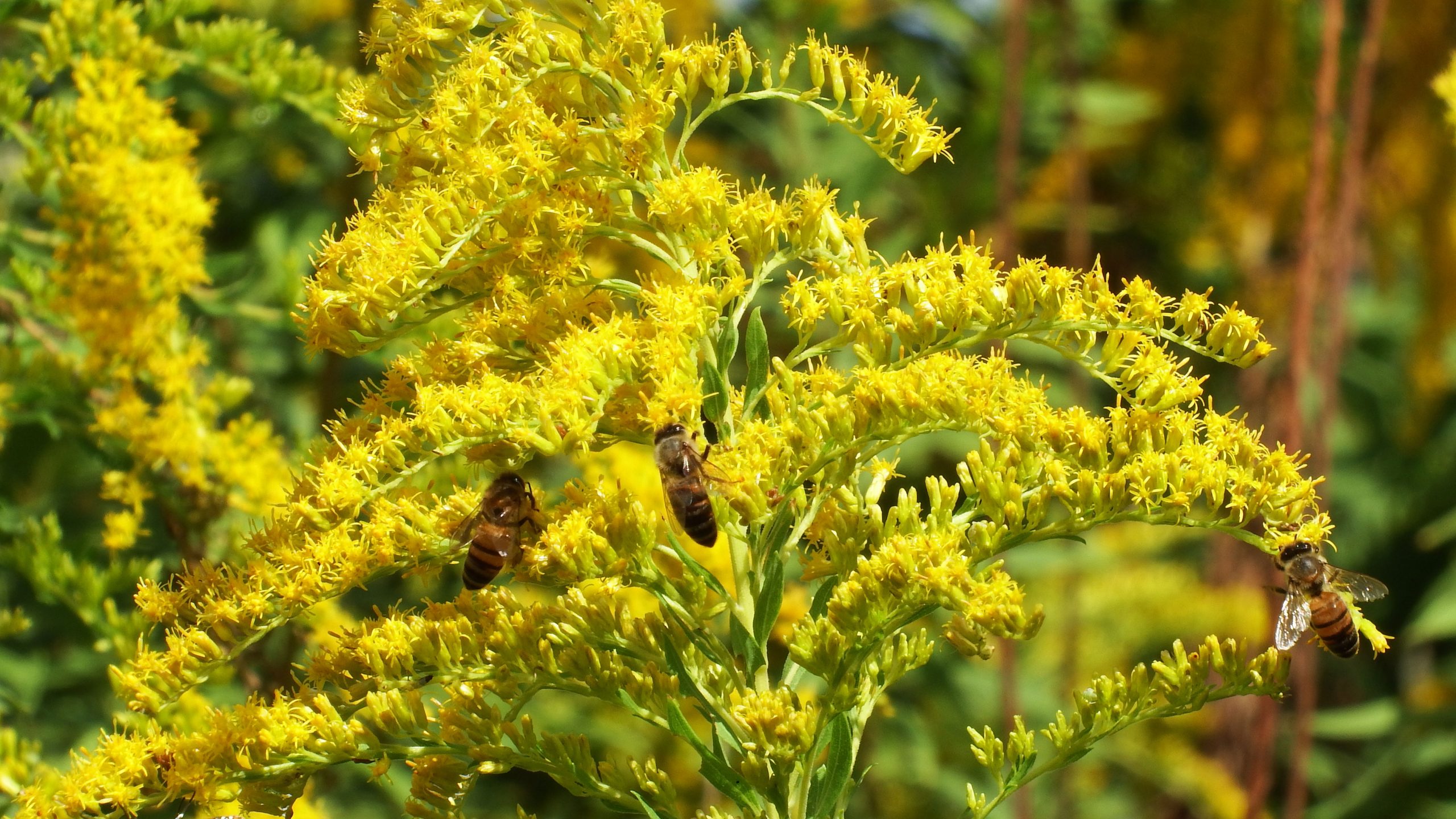Autumn

The calendar says fall and the heat just laughs, but the Park is nevertheless changing. Nectar is getting harder to find.
The sunflowers that filled every glade are gone to seed. Morning glory is still lighting up the morning, but those flowers are done by mid day. The prairie grasses are poking their flowers higher and higher so I can finally figure out what some of them are. They all look very alike until they bloom.
But grasses are wind pollinated. They don’t need an insect or bird to spread pollen to egg. The wind carries the pollen aloft and eventually some of it will land on the female parts of the same species and a seed will result. So as far as hungry pollinators are concerned, they are useless.

This would be a bigger problem if most of our native bees weren’t dead by now. They live only one season. Having laid eggs for next year, their job is done, their species will live on even if they will not. Eastern carpenter bees (photo above) are one of the few natives still going. The only native bees that won’t die in the fall are bumblebees. Almost all of them do die, but queen bumblebees hibernate. Each will hibernate in her tiny nest, waiting for spring so she can lay the eggs that were fertilized before she began her slumber.
Honey bees, however, are busy as all get out. They aren’t native to the US. Brought here from Europe with settlers, these bees have spread practically everywhere and we are the richer for them. Honey bee colonies won’t die in the winter, even in the colder northern climes, but they will go through upwards of thirty pounds of honey over the winter to stay alive.
That means that right now, our honey bees are frantically putting up provisions for the winter and there is only one really good nectar source available. Goldenrod. If you want to watch the action in the Park, find a stand of goldenrod and just look.

Many people confuse goldenrod with ragweed. I’m not sure why, except that goldenrod looks like something that might be more powerful that you suspected. Actual ragweed is, like our grasses, wind pollinated. The flowers aren’t even a little showy, because they don’t need to attract pollinators. Their strategy is to make so much pollen that as the wind bears it away, it’s bound to eventually find a female. It’s also certain to find everyone who is allergic.

